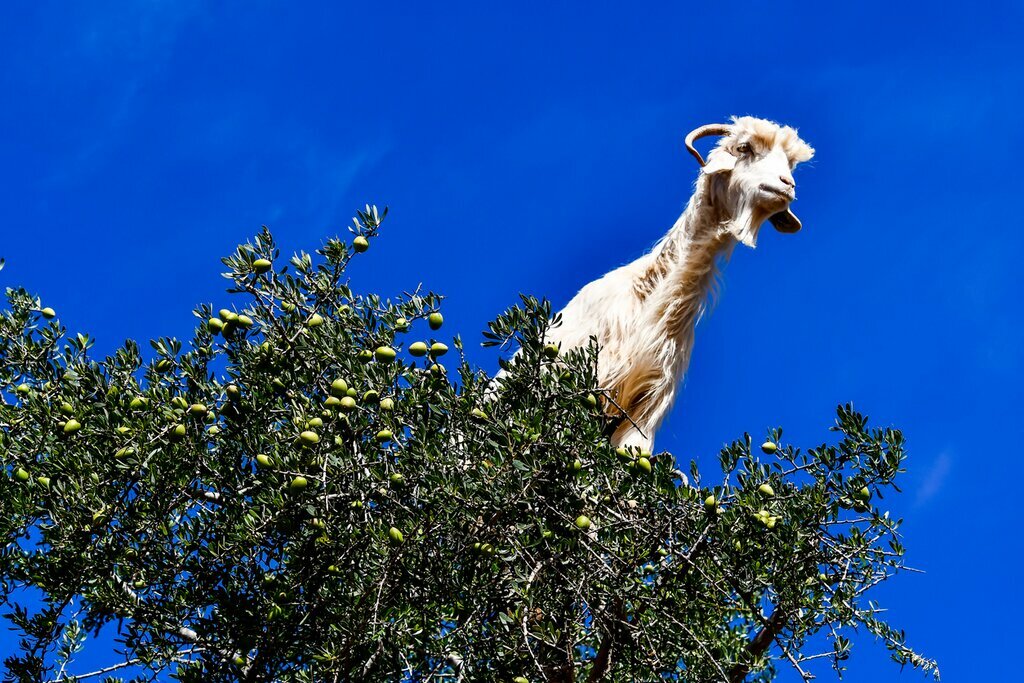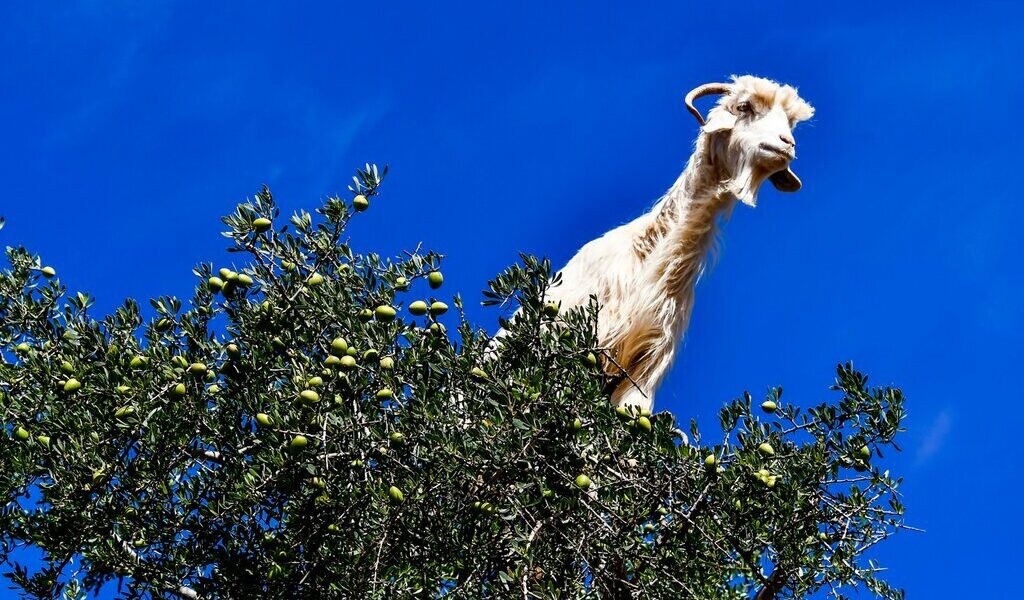
To have the best experience when visiting Morocco, particularly for first-timers, plan a trip in the spring or fall, with May and September being the most optimal months. The weather is consistently pleasant, not too cold in the mountains nor too hot in the deserts, and the crowds along the coasts and in the cities are more manageable. Stick to the mountains and the beaches during the heat of the summer months and the Sahara and cities in the winter.
## Unveiling the Best Time to Embark on Your Moroccan Journey
Morocco, a land of vibrant colors, rich history, and diverse landscapes, beckons travelers year-round. However, to truly experience the magic of this North African gem, understanding the nuances of its seasonal climate is crucial. While Morocco offers something special in every season, spring and fall emerge as the most favored times to visit, with May and September often cited as the sweet spots by seasoned travelers.
During these shoulder seasons, the weather across the country is generally at its most agreeable. Imagine balmy days perfect for exploring bustling cities, coupled with comfortable evenings in the Sahara, where the chill of winter has receded and the intense heat of summer is yet to arrive. Even the beaches beckon, inviting you to soak up the sun and bask in the coastal breezes, though September often presents the most idyllic beach conditions.
Venturing into the heart of Morocco during spring and fall offers a particularly pleasant experience. The inland cities, such as the captivating Fes and the enchanting Marrakesh, become more manageable to explore, escaping the scorching temperatures that can often plague the summer months. Moreover, savvy travelers might discover enticing deals on tours and accommodations during the earlier part of spring and the latter part of fall, excluding the peak holiday periods.
That being said, Morocco remains a captivating destination no matter the time of year you choose to visit. The key lies in understanding the varied climate and weather patterns across the country’s diverse regions. From the windswept Atlantic and the tranquil Mediterranean coasts to the majestic dunes of the Sahara and the rugged beauty of the mountainous interior, each area presents its own unique climatic characteristics. Careful planning, tailored to the specific regions you intend to explore, ensures a memorable and comfortable Moroccan adventure.
## Navigating Morocco’s Seasons: A Comprehensive Guide
To assist you in planning your perfect Moroccan escape, consider this seasonal breakdown, highlighting the pros and cons of each period, along with recommended activities and destinations.
| Seasons | Pros | Cons | Best for | Where to Visit |
|—————–|—————————————————————————————————————————————————————————————————-|——————————————————————————————————————————————————————————————————–|———————————————————————————————————————————————-|————————————————————————————————————————————————————————————————|
| **Spring (Mar-Apr)**
*best for food, nature, and/or culture lovers* | Festival season, offering a glimpse into local traditions and celebrations; pleasant weather extends across the nation; landscapes burst into life with blossoming flowers. | Increased crowds, especially around the Easter holiday period; prices tend to be at a premium; ocean temperatures remain cool, becoming more inviting towards the end of May. | Exploring cities, immersing yourself in the outdoors; venturing into the Sahara; enjoying hiking; participating in cultural activities, such as observing local traditions during Ramadan. | The Valley of the Roses, renowned for its fragrant blooms; the scenic stretch between Marrakesh and Ouarzazate, adorned with almond blossoms; vibrant cities; the captivating Sahara desert. |
| **Summer (Jun-Aug)**
*best for active travelers who don’t mind the heat* | Fewer crowds compared to other seasons; pleasant weather along the coast and in the mountains, offering respite from the heat; potentially lower costs on accommodations and tours. | Locals often flock to the coast and cities, leading to increased noise and crowds, particularly during school holidays; high temperatures are prevalent across the country, especially in Marrakesh. | Kite surfing adventures; hiking, cycling, horseback riding, and cultural explorations in the mountains and off the beaten track. | The Rif and Atlas mountains, providing cooler climates; the charming Chefchaouen; the Atlantic coast, particularly Essaouira and Dakhla, ideal for kitesurfing. |
| **Fall (Sep-Nov)**
*best for first-time visitors* | Sunny and pleasant weather prevails throughout the country, conducive to a wide range of activities. | High season for international tourists, resulting in increased prices. | Exploring cities, venturing into the outdoors; discovering the Sahara; hiking in the Atlas mountains; enjoying the coast; swimming in the Atlantic. | Imperial cities, showcasing Morocco’s rich history; the stunning Todra Gorge; the picturesque Dadès Valley; Toubkal National Park, ideal for hiking; Imlil, a gateway to mountain trails; Erg Chebbi and Erg Chigaga, offering unforgettable desert experiences.|
| **Winter (Dec-Feb)**
*best for adventurous travelers* | Off-season deals and discounts are often available, except during the Christmas and New Year period; fewer tourists; most hotels offer heating for added comfort. | Nights can be quite cold; expect rain, particularly in the northern regions and along the coasts. | Exploring cities, hiking in the southern regions; immersing yourself in cultural activities; skiing in the mountains; indulging in the warmth of a traditional hammam. | Southern areas, offering milder temperatures; Aït Benhaddou, a UNESCO World Heritage site; Ouarzazate, known as the “door to the desert”; Marrakesh, a vibrant cultural hub; Merzouga, a gateway to the Erg Chebbi dunes; Todra Gorge, offering stunning hiking opportunities.|
## Spring Awakening: Experiencing Morocco from March to May
While fall holds its own charm, spring stands out as an equally captivating time to plan a trip to Morocco. May, marking the transition to summer, often proves to be the most delightful month. Spring is a haven for outdoor enthusiasts. The heat of the day remains moderate in most regions, allowing comfortable exploration, while nature bursts into a vibrant display of colors.
Spring temperatures are generally pleasant, skies remain clear and sunny, and landscapes transform into verdant canvases. March heralds the arrival of spring, characterized by budding trees and blossoming flowers. By April, the days grow warmer and longer, although evenings still retain a cool crispness. Be aware that sandstorms can occasionally occur in the Sahara due to strong winds during this period.
In April, temperatures in many areas reach a comfortable high of 75°F (24°C). The coastline tends to be slightly cooler, though the Atlantic coast experiences warmer temperatures than the Mediterranean as you travel further south. In Marrakesh, expect daytime temperatures around 75°F (24°C), dropping to lows of 54°F (12°C) at night. This agreeable weather naturally attracts numerous tourists, so booking your accommodations well in advance is highly recommended to secure your preferred choice.
Beyond the weather, the natural beauty of Morocco is at its peak during spring. The fresh produce and regional food scenes are not to be missed. If Ramadan occurs during your spring visit, embrace the opportunity to share Iftar with a local family and savor delicious, traditional dishes. Restaurants remain open for tourists, allowing you to eat and drink freely, even if locals are observing the fast. Consider embarking on a 13-day spring-themed adventure, taking you from the northern cities of Tangier and Chefchaouen to the imperial cities of Fes and Marrakesh. This journey will lead you to the fragrant Rose Festival in Kelâat M’Gouna and showcase the almond blossoms that adorn the desert landscapes of Aït Benhaddou and Boumalne Dades.
## Summer Escapes: Embracing the Heat of Morocco (June to August)
Summer in Morocco can be intensely hot, with July often recording the highest temperatures. In Marrakesh, you can anticipate average daily temperatures of 83°F (29°C) and nighttime lows of 70°F (21°C), with highs potentially reaching over 100°F (38°C) by mid-afternoon. If you’re tolerant of high temperatures, exploring the major cities in the country’s interior remains a viable option. However, combining your city visits with excursions to the coast and/or the Atlas or Rif mountains can provide welcome relief from the heat. The Sahara in eastern Morocco reaches extreme temperatures during the summer, making it best experienced during the early morning or evening hours when the sun has set. Despite the intense daytime heat, be prepared for significantly cooler nights in the desert.
During the summer, locals often seek refuge along the coasts, particularly the calmer and warmer Mediterranean. The Atlantic coast, however, with its powerful waves, attracts watersports enthusiasts, especially those keen on kitesurfing. Embark on a nine-day adventure that begins in the cool gardens of Marrakesh, ascends into the High Atlas mountains, ventures into the Agafay Desert, and concludes at the coastal kitesurfing paradise of Essaouira. Alternatively, expand your Moroccan city exploration with a 12-day itinerary, dividing your time between Tangier, Chefchaouen, the imperial cities of Fes and Marrakesh, and the coastal charm of Essaouira.
## Autumnal Allure: Discovering Morocco from September to November
Fall emerges as another prime season to explore Morocco, rivaling spring in its appeal, particularly for first-time visitors and those aiming to experience the country’s highlights. Although warmer than the spring months, the weather remains less oppressive than the summer heat, with mild low temperatures around 58°F (15°C) and maximum daytime highs averaging 84°F (29°C) in Marrakesh. Rainfall is minimal during this period, making it ideal for packing light clothing such as shorts and T-shirts. Layering is advisable for the cooler evenings, especially sweaters and a light jacket for desert and mountain excursions.
The Atlas mountains experience cooler temperatures, enhancing the vibrant autumn foliage. Coastal areas offer a delightful contrast between the warm sun and the refreshing ocean breeze. While the coasts may become less crowded as locals return home, the ocean may require a wetsuit for comfortable swimming by November.
The fair weather attracts numerous travelers to the cities and Sahara adventures, making it prudent to book accommodations and tours well in advance. Consider a classic 10-day journey encompassing cities like Casablanca, Chefchaouen, Fes, and Marrakesh, alongside desert excursions beyond the Atlas mountains, where you can sleep under the stars in a Bedouin-style tent just outside Merzouga.
## Winter Wonders: Experiencing Morocco from December to February
Contrary to common assumptions, Morocco experiences a distinct winter season. The Atlas mountains receive sufficient snowfall, creating opportunities for skiing holidays, particularly in January. In other regions, the weather remains bright and sunny, though cooler compared to other times of the year. Marrakesh, for example, typically experiences average lows of 43°F (6°C) and highs of 66°F (19°C). Adding to the appeal, rainfall is minimal, with approximately 2 inches (51 mm) or less expected over 7-11 days a month, mainly in the northern areas, leaving southern Morocco relatively drier. Dubbed the “cold country with the hot sun,” be prepared for temperatures to drop significantly once the sun sets.
Despite the cooler temperatures, Morocco’s winter weather remains relatively balmy compared to much of the Northern Hemisphere, particularly in February as temperatures begin to rise. Packing a raincoat is advisable, just in case. The medinas of Morocco’s cities offer a captivating experience with fewer crowds and lower prices. February often presents the most budget-friendly travel opportunities. If you plan to explore the Sahara, be aware that nights are cold, but most camps provide heating, ensuring a comfortable experience.
Embark on a thrilling 10-day adventure through southern Morocco, beginning in Marrakesh, venturing to the coast, and looping through Taroudant before reaching the less-visited, but equally impressive, Erg Chigaga dunes.
B-1660

